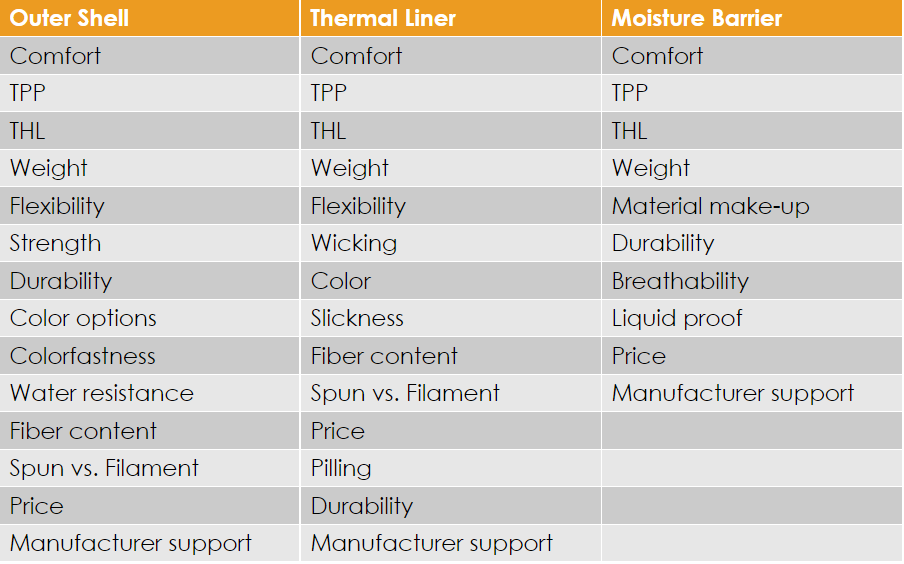When it comes to firefighting, one of the most crucial decisions you'll make is choosing the right turnout gear. Your safety and performance depend on it. In this guide, we'll break down the process into four simple steps to help you select the perfect turnout gear that suits your department’s needs.
Step 1: Understanding NFPA Standards
The National Fire Protection Association (NFPA) plays a pivotal role in safeguarding the health and safety of the fire service through their comprehensive personal protective equipment (PPE) care and maintenance guidelines. To ensure the well-being of your department's personnel, it's key you choose a structural firefighting ensemble that complies with the NFPA 1971 Standard. NFPA 1971 protects firefighting personnel by establishing minimum levels of protection from thermal, physical, environmental, and bloodborne pathogen hazards encountered during structural and proximity firefighting operations.
It’s also essential to understand that structural firefighting PPE is purpose-built to protect against the thermal hazards of interior structural firefighting. Donning structural gear in non-fire emergencies can cause unnecessary stress on the body, potentially leading to exhaustion and exposure to contaminants.
Step 2: Creating a Risk Assessment
Conducting a systematic risk assessment is a critical step for selecting the right PPE personnel. This process involves identifying specific hazards that your department may encounter while performing their duties. Once these hazards are identified, the next step is to determine the appropriate levels of personal protection required to ensure the safety, effectiveness, and efficiency of firefighters when facing these potential dangers.
A comprehensive risk assessment serves as a valuable tool in several key aspects:
- Identifying Hazards: What hazards (physical, biological, radiological, thermal, environmental) department personnel will potentially confront during their operational duties.
- Frequency of Use/Operations: What number of structural and non-fire calls does your department respond to? How frequently will department personnel use structural firefighting ensembles?
- Response Area Topography: Identify where your department is located geographically. What type of climate is typical of the area?
- Response Area Features: Identify if your department is located in a rural town or metro area filled with highways. Are there any physical areas of operations that have influence on what PPE is needed?
- Satisfaction: What are the experiences of the crew members using existing turnout gear? Have firefighting personnel rate their level of satisfaction.
- Justifying Additional Resources: Additional resources, like acquiring two sets of turnout gear or developing a personnel training plan, can ensure that your crew is prepared and equipped to handle the diverse challenges they may encounter.
Step 3: Select the Right Materials
Each turnout composite system includes an outer shell, moisture barrier, and thermal liner. All three layers must work well together to provide balanced protection. The Thermal Protective Performance (TPP) and Total Heat Loss (THL) numbers come from the 3-layer composite system you choose which affects breathability and comfort. TPP measures the time it takes for the flame’s heat to pass through the 3-layer composite, potentially causing a second-degree burn, and THL measures the ability of the total composite system to allow heat and moisture to evaporate.
Composite systems determine:
- How much the overall turnout gear will weigh
- How easily your body will be able to self-regulate back to a normal temperature
- How much heat your turnout gear will endure while protecting you
- How much strength it'll take for an object to penetrate through the protective layers
- How easily you'll be able to move through a fire scene
Things to consider when choosing composites:

Choosing breathable, light, and thin turnout composites that support your body’s natural cooling process will allow for proper sweat evaporation to occur and reduce your chances of developing heat stress.
Step 4: Field Testing
Assessing turnout gear is an essential preliminary phase for any fire department when considering new garment acquisitions. To ensure seamless PPE wear trials and make informed decisions for the well-being of all personnel, departments can adopt a set of best practices. It's important to underline that effective participant communication and coordination are key to reach cohesive and beneficial outcomes.
- Seek alignment for a streamlined process: A defined procurement plan that’s developed with input from all parties can guide your wear trial to the desired outcome better than an informal process that yields inconsistent results. Ask your group to agree on the questions you want to answer before your PPE evaluations begin.
- Make it measurable: Set clear and measurable criteria for what is being evaluated. There are different criteria for different pieces of PPE and knowing what factors are most impactful is key.
- Be open to change: Bunker gear is becoming stronger, safer, and in some cases, smarter. Ask your manufacturer about designing a system from the ground up that fits the changing face of fire service.
- All participants should test all gear: No matter how precise upfront measurements may be, there are several factors that can impact the actual fit once the garment is received.
- Discuss the results together: A post-evaluation summary is your chance to understand the results in detail, including all surveys and reports created throughout the wear trial.
Streamlining the turnout gear selection process isn't just about finding the right gear; it's about ensuring the safety, efficiency, and well-being of those who serve our communities selflessly. By following these four steps, you're contributing to the continuous improvement of firefighting equipment and best practices.
Ready to make the switch to quality construction, the fastest lead times, and the best customer service in the industry? Request a Quote today!



.png)



Leave a Reply